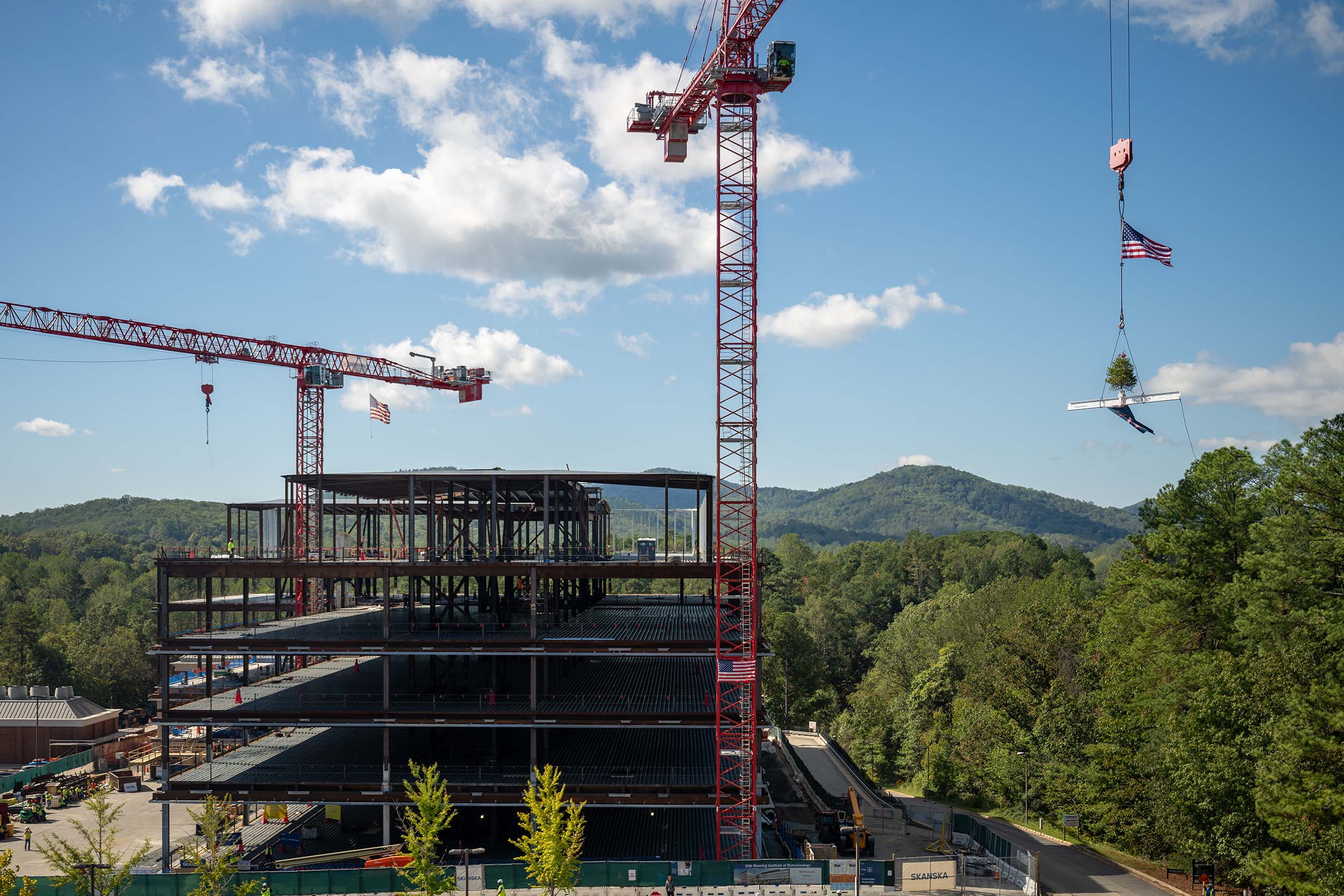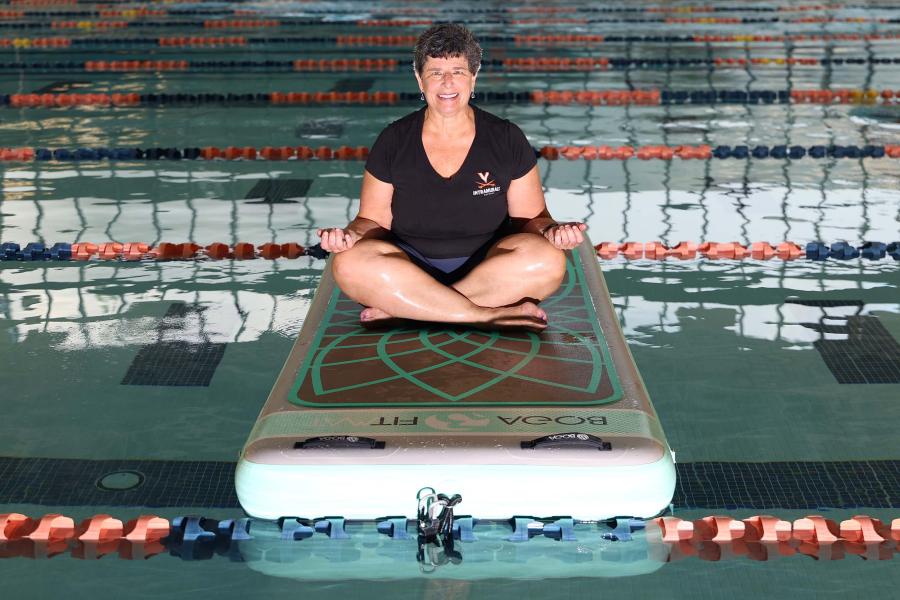Just after 11:30 a.m. Monday, the operator of a towering construction crane began hoisting a steel beam – painted white and bearing both signatures and a small evergreen tree – into the azure sky, swinging it to the peak of a steel skeleton on Ray C. Hunt Drive.
The “topping off” ceremony for the Paul and Diane Manning Institute of Biotechnology marked the ceremonial end to the vertical construction of a building that eventually will encompass 350,000 square feet of laboratory and research space. It also punctuated the University of Virginia’s growing commitment to becoming a regional biomedical hub, where scientists will develop drugs and therapies to end some of medicine’s most challenging conditions and afflictions.
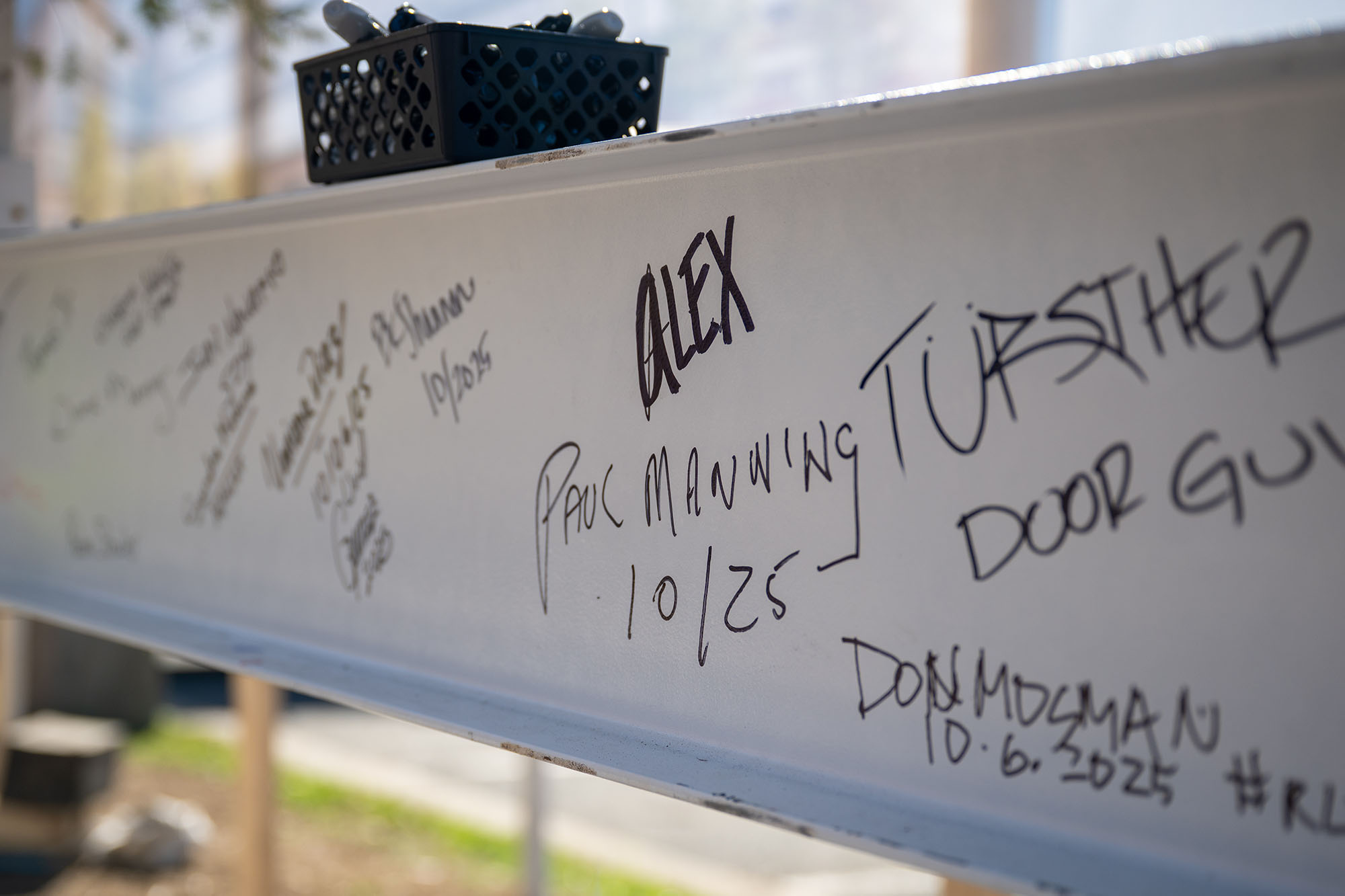
The names of well-wishers and project supporters are affixed to the final beam, including a signature from University of Virginia Board of Visitors member Paul Manning. Manning and his wife, Diane, donated $100 million to make the institute a reality. (Photo by Cece Rooney, UVA Health)
“Our goal is not to do the research for the sake of research, but to cure diseases,” Paul Manning, a member of the UVA Board of Visitors who, along with his wife Diane, donated $100 million to make the institute possible. “The Manning Institute stands as a promise that science will not remain in journals, but will move into clinics and hospitals, into patients fighting for their health. Together we are building not only a facility, but a future of cures, treatments and hope.”
When completed in 2027, the facility will house scientists who will aim to turn discoveries into patient treatments as quickly and safely as possible.
“Our mission is simply transforming science into medicines,” Mark T. Esser, a UVA alumnus who was hired to head the institute, said.
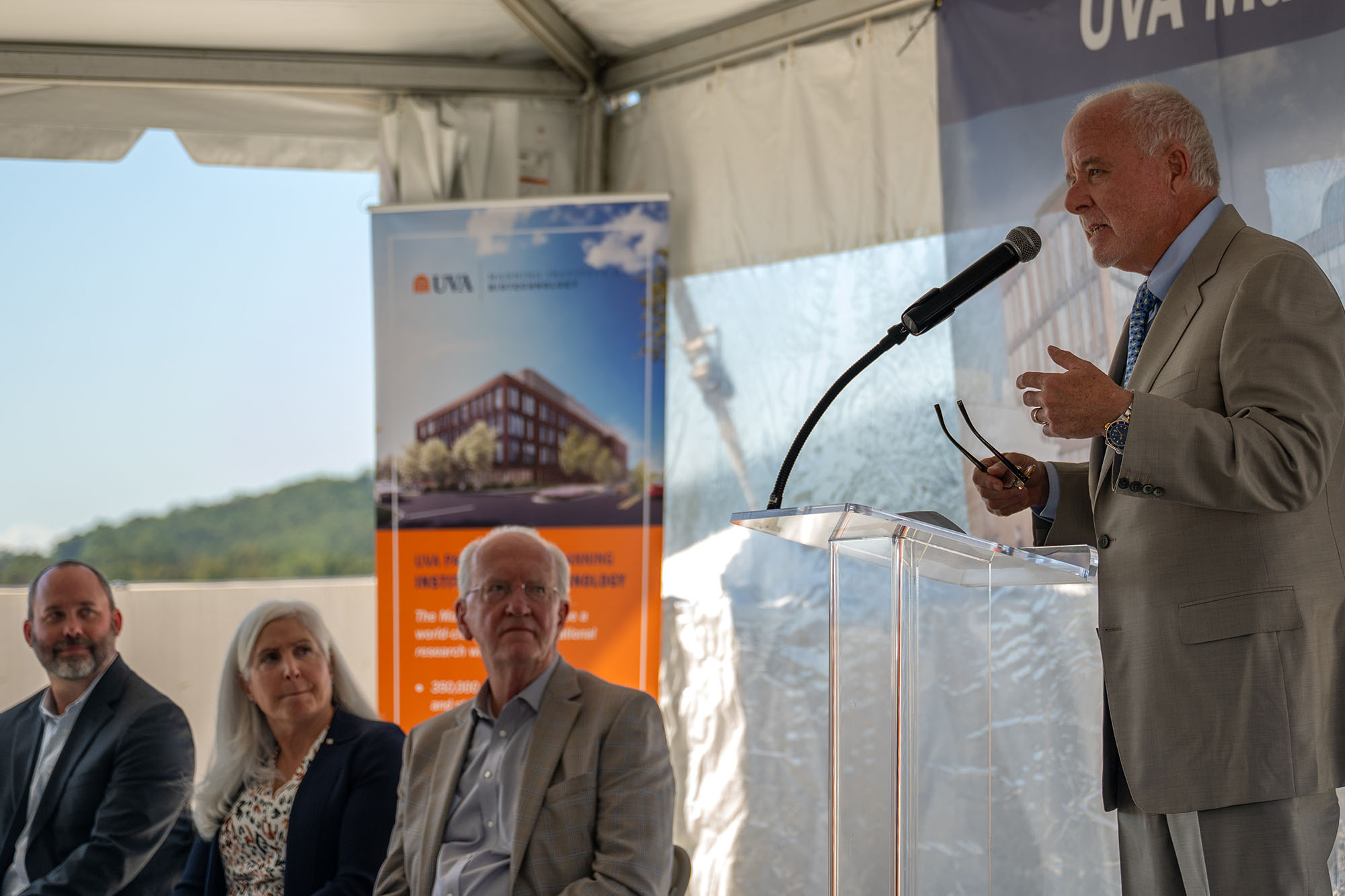
Manning speaks to the crowd at the ceremony. “Our goal is not to do the research for the sake of research, but to cure diseases,” Manning said. (Photo by Cece Rooney, UVA Health)
He told the crowd assembled on the top level of a parking deck adjacent to the construction site the Manning Institute will be a cutting-edge research and clinical facility that will, among other things, examine how to use a patient’s own immune system to attack cancer cells and eradicate the disease. Another focus, he said, will be treating and curing autoimmune diseases, like multiple sclerosis, when the body’s immune system mistakenly attacks its healthy cells and tissue.
“This will be the mission of the Manning Institute,” Esser said.
UVA interim President Paul Mahoney said the project is quickly taking shape not only because of the Mannings’ generosity, but also because of the enthusiastic support of Virginia Gov. Glenn Youngkin and his administration. Mahoney also thanked UVA President Emeritus Jim Ryan for being a “champion for the institute.”
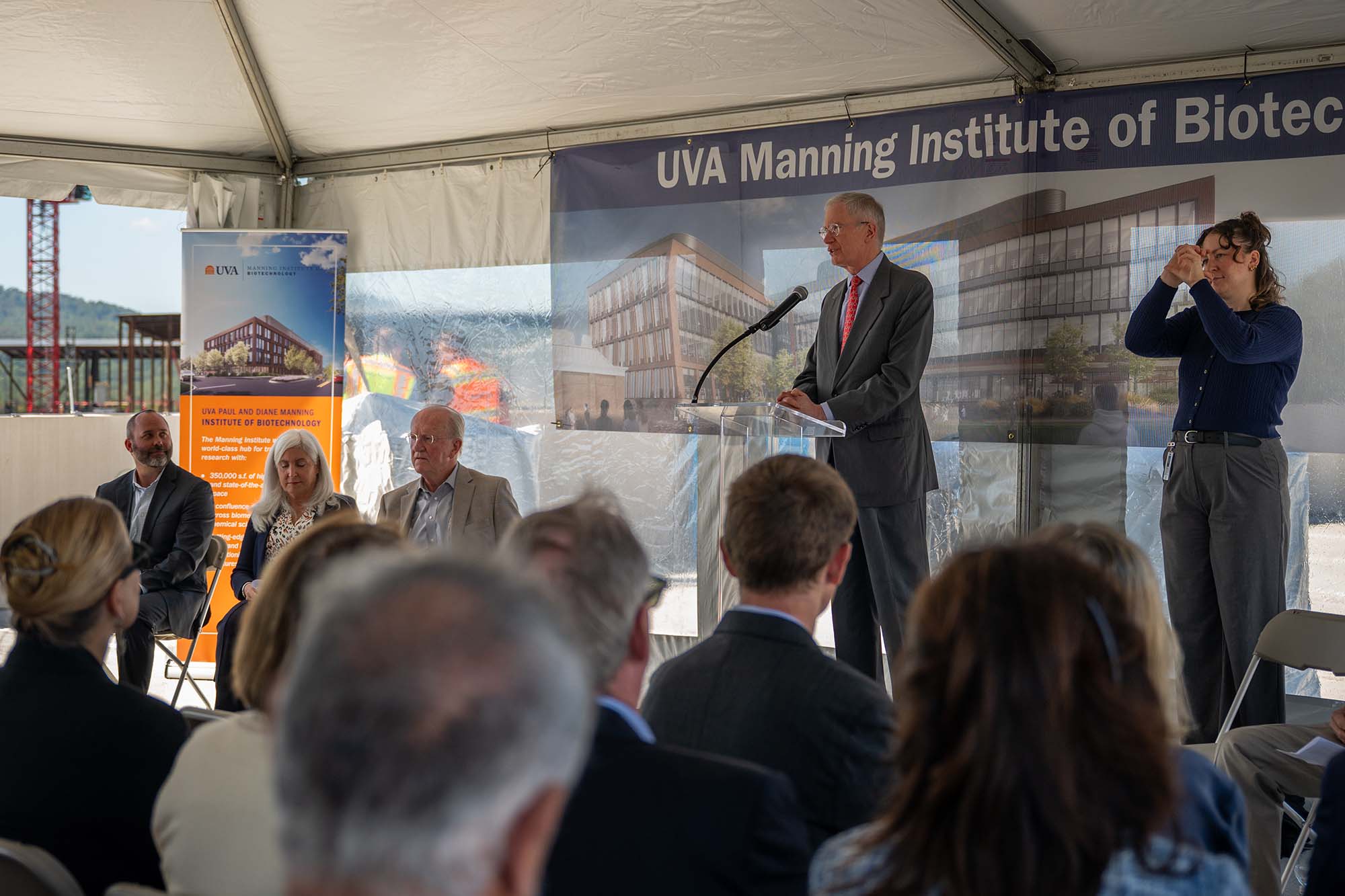
UVA interim President Paul Mahoney tells the crowd the institute, when completed, will be the site of groundbreaking life science to serve residents of Virginia and beyond. (Photo by Cece Rooney, UVA Health)
“Today, we acknowledge and appreciate what has been accomplished, and look forward to all that will be accomplished once the Manning Institute is fully realized,” Mahoney said. “The structure you now see will be filled with researchers exploring cell therapy, gene therapy, nanotechnology, drug delivery and other breakthroughs. Patients will participate in clinical trials. Students will join their mentors in labs. Partner companies will bring new treatments to patients, and above all, patients from across Virginia and beyond will enjoy more effective treatments, better care and healthier lives because of what will happen in this building.”
Virginia Secretary of Commerce and Trade Juan Pablo Segura said the Manning Institute and UVA’s commitment to life sciences is already attracting interest and investment in Central Virginia from companies like AstraZeneca and Eli Lilly. He credited the Mannings, UVA leadership, and the scientists and researchers striving for cures for putting the University and the region at the forefront of innovation.
“You are starting companies. You are incubating the next generation of innovators. You’re fired up to save lives,” he said. “That’s what we’re doing here. And Virginia and Charlottesville will be a world-class destination for the life sciences.”
